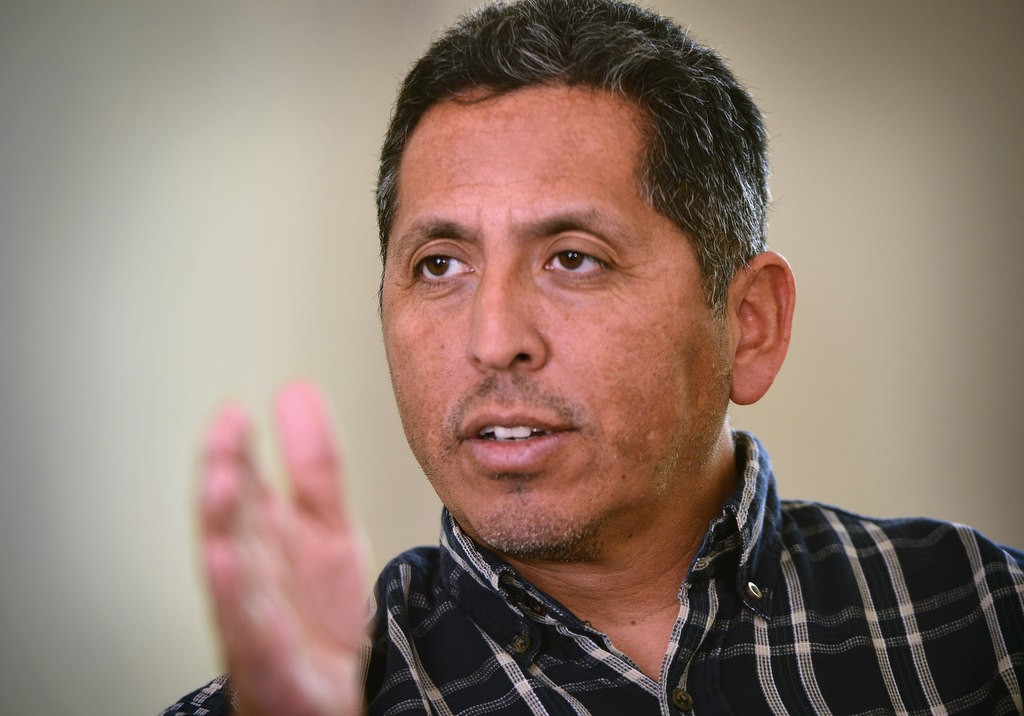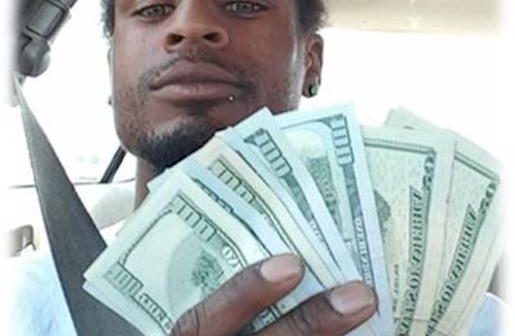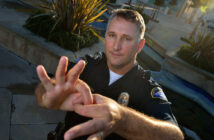They found her walking the streets at 3 a.m. in an area of Santa Ana well known for prostitution.
She had a black eye, multiple bruises and a scar on her arm.
She was 13.
When Santa Ana PD officers first started questioning Diane (not her real name) early June 2, 2016, she lied about her age and protected the identity of her pimp.
After some investigating, however, SAPD officers were able to locate and arrest the pimp that same day.
Further investigation showed that for the past month, the 30-year-old pimp had been driving Diane up and down the state, coercing her to perform sex acts with up to 12-15 clients per day for his commercial benefit.
And they determined her pimp was responsible for her injuries.
Far from an aberration, Diane’s story is an ugly reality that regularly plays out in all areas of Orange County: minors being coerced into commercial sex by human traffickers who prey on them.
The hookups happen everywhere, police say, from bedrooms in luxury condominiums along the coast to cars in seedy neighborhoods.
Compared to other counties, Orange County’s relative affluence can easily command more than double the rates for sex acts in other counties — a huge draw for human traffickers, says Anaheim PD Sgt. Juan Reveles, who runs the multi-agency law enforcement component of the Orange County Human Trafficking Task Force (OCHTTF).
“Orange County stands out as a beacon of light where (human traffickers) are going to make money,” says Reveles, adding that pimps, about 80 percent of whom come from outside the county, many from Northern California and Nevada, typically earn between $500 to $2,500 a day — and that’s with only one girl in their “stable.”
“It truly is modern-day slavery,” says Reveles, noting that the girls aren’t called by their names — “b*tch” is the preferred term — and many are branded by their pimps with tattoos on their backs, arms, necks and faces
“They’re pure-evil predators,” APD Investigator Happy Medina, a member of the OCHTTF who handled Diane’s case, says of sex traffickers like John Wayne Calhoun from San Bernardino, who on Aug. 14, 2017 was found guilty by a jury of numerous felonies in connection with Diane’s case.
“They’re very similar to child molesters — they groom they recruit — it’s just their motives are different,” Medina says. “For the most part, unlike child molesters, they don’t do it for self-gratification. They do it for the money.”
Indeed, on social media posts, Calhoun took selfies of himself flashing around fistfuls of $100 bills — a bragging practice known as “flossing.”
In 2016, the latest year in which figures are available, the OCHTTF assisted 234 people who exclusively were victims of sex trafficking. Of these victims, 74 of them — 32 percent —- were minors, according to the 2017 OCHTTF Victim Report.
Medina points out that, by his estimates, 90 percent of the adult prostitutes he’s spoken to were forced into commercial sex when they were minors.
“Most don’t have families,” Reveles says. “They’re runaways, many have been molested as children or grew up in the foster care system.”
They are, in short, perfect prey for human traffickers.
“The girls tell us the only ones that are going to accept them is a pimp — society doesn’t accept them,” says Medina. “Girls like her tell us they’re paying their pimps money for the love they never had. The sex is just a job. They don’t get to keep any of the money. They’re paying their pimp to be dad, boyfriend or caregiver.”
On Sept. 8, 2017, Calhoun, 31, was sentenced to 23 years to life in state prison and mandatory lifetime sex offender registration. The sentencing included enhancements of human trafficking by fear or force and a prior 2012 felony conviction for inflicting corporal injury upon a spouse or cohabitant.
Diane, who prosecutors say met Calhoun in May 2016 and soon after was coerced into prostitution after he gained her trust, is the youngest filed victim since the Orange County District Attorney’s Office established, in 2013, its HEAT Unit (for Human Exploitation and Trafficking).
And Diane is the youngest victim ever contacted by the OCHTTF, a partnership between the APD, California Highway Patrol, Costa Mesa Police Department, Homeland Security Investigations, Irvine Police Department, Newport Beach Police Department, OCDA’s, Orange County Social Services, Orange County Probation, Orange County Sheriff’s Department, and the Santa Ana APD
Diane’s case highlights the time-consuming, multi-agency effort that goes into helping victims of human trafficking.
Her case file lists some three dozen people who came into contact with her over the course of the prosecution of Calhoun, from police officers to judges to probation officers and Victims Advocates at the non-profit Waymakers, which until recently was known as Community Service Programs Inc.
“No neighborhood is immune from the horrors of modern-day slavery,” said Michelle Heater, program director, victim assistance programs for Waymakers. “We work with victims of sex and labor trafficking across the county. I wish I could say Diane’s story is unique, but it’s not.”

Anaheim PD Sgt. Juan Reveles runs the multi-agency law enforcement component of the Orange County Human Trafficking Task Force (OCHTTF). File photo by Steven Georges/Behind the Badge O.C.
Juliet Oliver, a deputy district attorney on the Orange County District Attorney’s Office Human Exploitation & Trafficking Unit, prosecuted Calhoun.
“Just as big as the (human trafficking) problem is, it takes an equal, if not greater size and effort of collaboration to tackle the problem,” Oliver said.
“Diane’s trafficker was successfully prosecuted, but only because many different agencies and partners came together and stopped at no end to ensure Diane’s safety and to ensure that Mr. Calhoun would never victimize her again,” Oliver added.
Since 2004, the OCHTTF has assisted more than 735 human trafficking victims.
And the OCDA has had success in prosecuting human traffickers.
Between 2012 and 2016, a total of 256 cases of human trafficking, pimping and pandering were prosecuted. In 2016, about 67 felony cases were filed to the HEAT Unit. There were about 69 convictions in 2016.
Despite the success with convictions, and all the effort that goes into helping young victims of human trafficking like Diane, getting victims to turn their lives around for good is, sadly, an elusive outcome, authorities say.
After Santa Ana PD found Diane that night in June 2016, and up until Calhoun’s trial last year, Diane ran away from shelters and other non-lockdown facilities numerous times, Medina says.
“I think I rescued her (from the streets) four times,” he says.
One time, Medina found Diane working a well-known prostitute stretch of Figueroa Boulevard in Los Angeles, braless in a provocative top and wearing pigtails and booty shorts.
These days, Diane is believed to be working the streets in Las Vegas.
“From a law enforcement perspective, we’ve done everything possible,” Medina says. “The opportunity for her to receive help was abundant.”
He adds: “The system can only do so much for them. They have to be willing to seek help and accept help.”
“I have to say,” the advocate wrote, “every time she testified it was like a piece of her mind opened up to the reality of the situation she was in. (Diane) broke down on the stand several times, but always came back with a stronger attitude and willingness to push forward even if the questions seemed to be repetitive to her.”
The victim advocate realized how her presence in the courtroom affected Diane.

On Sept. 8, 2017, John Wayne Calhoun, 31, was sentenced to 23 years to life in state prison and mandatory lifetime sex offender registration. Photo courtesy of APD
“It was very important for (her) to have not only the emotional support, but also a familiar face to look at during the questioning…. It was important to be able to help distract her during the breaks so she was not constantly thinking about the trial.
“Making her laugh and joking with her about life to help her feel some type of normalcy during the process was just what she needed.”
Medina says occasionally, he tries to find out where Diane is and what she is doing.
Helping to put bad guys in prison for a long time keeps him motivated, he says — even if Diane’s story, and the story of many minor victims of human traffickers, don’t end on happy notes.
“Welcome to our world,” Medina says.
Said Oliver: “The same vulnerabilities that make youth like Diane a target for exploitation make the ability to help her very hard. The only way we can help her and others like her is to show that we are all here together working for her best interests, even if she doesn’t want it.
“That commitment and dedication is what is typically lacking in victims’ lives and is the same void that traffickers aim to exploit,” Oliver added. “By filling that void instead with our support, we hope that victims like Diane can ultimately find the courage and hope to get out of the life.”
 Behind the Badge
Behind the Badge




